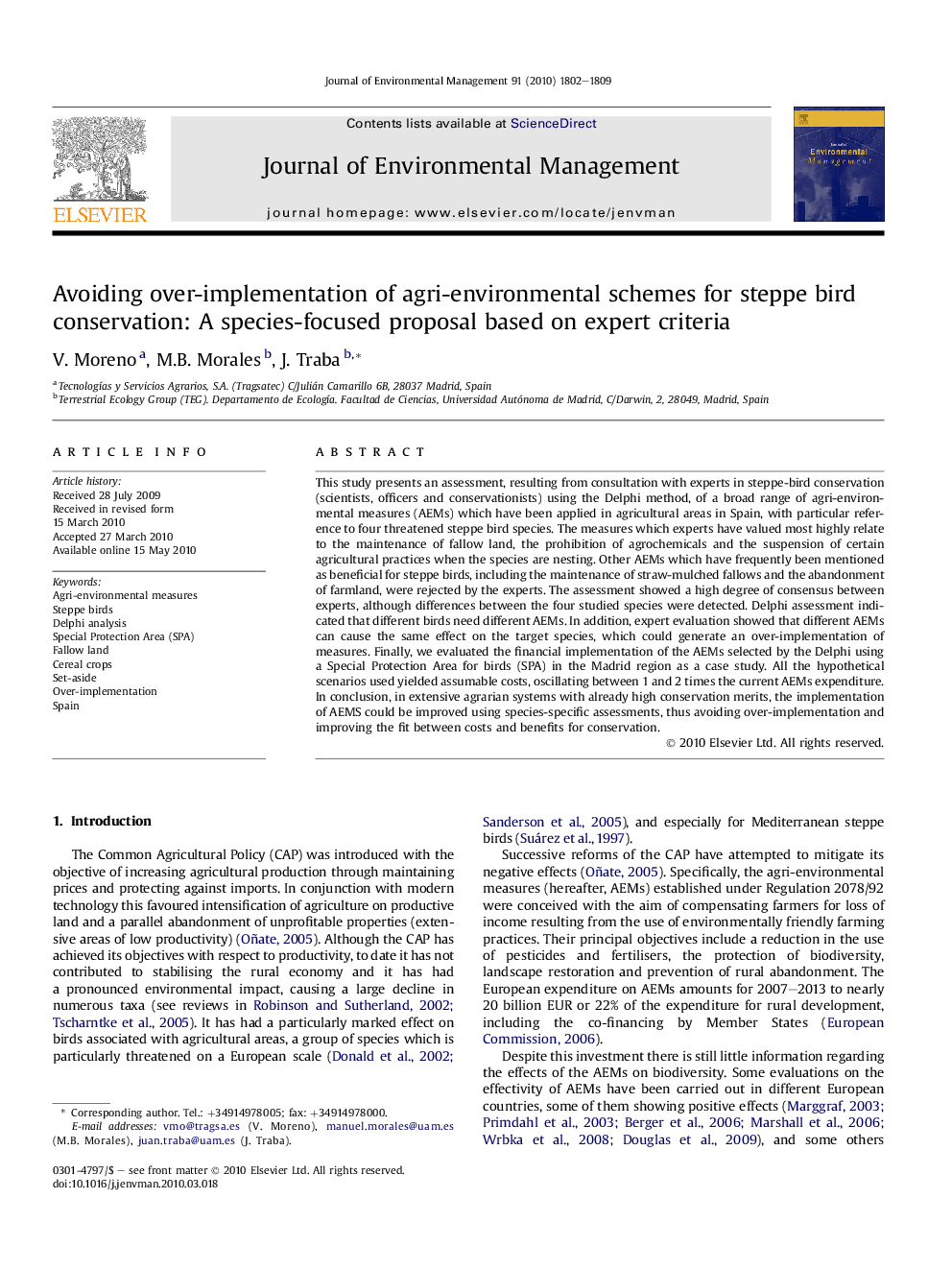| Article ID | Journal | Published Year | Pages | File Type |
|---|---|---|---|---|
| 1057143 | Journal of Environmental Management | 2010 | 8 Pages |
Abstract
This study presents an assessment, resulting from consultation with experts in steppe-bird conservation (scientists, officers and conservationists) using the Delphi method, of a broad range of agri-environmental measures (AEMs) which have been applied in agricultural areas in Spain, with particular reference to four threatened steppe bird species. The measures which experts have valued most highly relate to the maintenance of fallow land, the prohibition of agrochemicals and the suspension of certain agricultural practices when the species are nesting. Other AEMs which have frequently been mentioned as beneficial for steppe birds, including the maintenance of straw-mulched fallows and the abandonment of farmland, were rejected by the experts. The assessment showed a high degree of consensus between experts, although differences between the four studied species were detected. Delphi assessment indicated that different birds need different AEMs. In addition, expert evaluation showed that different AEMs can cause the same effect on the target species, which could generate an over-implementation of measures. Finally, we evaluated the financial implementation of the AEMs selected by the Delphi using a Special Protection Area for birds (SPA) in the Madrid region as a case study. All the hypothetical scenarios used yielded assumable costs, oscillating between 1 and 2 times the current AEMs expenditure. In conclusion, in extensive agrarian systems with already high conservation merits, the implementation of AEMS could be improved using species-specific assessments, thus avoiding over-implementation and improving the fit between costs and benefits for conservation.
Related Topics
Physical Sciences and Engineering
Energy
Renewable Energy, Sustainability and the Environment
Authors
V. Moreno, M.B. Morales, J. Traba,
